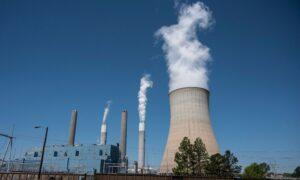House Republicans say Biden-imposed directives could unplug more than 200 power plants nationwide, including Montana’s dominant provider.
Among those imperiled are NorthWestern Energy’s 40-year-old generating plants in Colstrip, Montana, which provide power to two-thirds of the state’s homes and businesses and customers in South Dakota, Nebraska, and Yellowstone National Park.
The investor-owned utility just spent more than $560 million to meet newly imposed regulatory requirements. It will need to spend at least $600 million more to meet the new emission standards, it stated, making compliance with the do-or-die rule “uneconomic.”
“Montana gets a little cold” in the winter, and what the Biden administration’s new rule is threatening to do is pull the plug on the state’s largest electricity provider, he told EPA Administrator Michael Regan.
The new rule will strain a co-op that “already has a power grid problem” and would dictate where the power comes from instead of from the state’s own coal and gas resources, forcing it to transport power that may not be reliable when needed, according to Mr. Zinke.
“So when winters become 20 degrees below zero, it is a little problem out there, and I can tell you, part of [Montanans] being upset is D.C. doesn’t listen to [anyone] outside the beltway,” he said.
To remain competitively sustainable in meeting the new rule, coal- or gas-fired power plants such as NorthWestern’s Colstrip operations will have to pass on increased costs to consumers, according to Mr. Zinke.
He said that “energy costs will go up by $1,000 a family” in Montana annually because of the rule, noting that his running tally of how much “Bidenomics” has cost Montana families now tops $28,000 since January 2021.
“I think we just disagree with the $1,000 number, and I’m not quite sure the underpinning of the $28,000,” Mr. Regan said.
“But our analysis shows that rule will have, over the years, less than a 1-percent increase in energy costs.”

Do-or-Die By 2039
Coal generated about 16 percent of U.S. electricity in 2023, down from 45 percent in 2010, according to the EPA.
Natural gas provides about 43 percent of U.S. electricity, with the rest from nuclear energy and renewables, such as wind, solar, and hydropower.
Mr. Regan said that although the rule provides ways for some older, nonconforming plants to stay online after 2039, it will likely cause “some coal retirements.”
The power plant rule is one of four new regulatory initiatives imposed by the Biden administration. The other three address wastewater from coal-fired plants, coal ash in storage ponds, and mercury emissions.
NorthWestern’s Colstrip plant has emission issues with mercury, a neurotoxin that becomes airborne when coal is burned and is particularly harmful to children.
It has drawn intense criticism from its customers for failing to invest in upgraded technologies until recent years.
“Colstrip … can make the same investments in controlling mercury that North Carolina does, that West Virginia does, and North Dakota does,” Mr. Regan said.
He also said that “93 percent of the coal-[fired power plants] in this country have magically figured out how to control mercury at a level that doesn’t produce this toxic for our children.”
“And I will tell you this: There are four years to comply with this rule,“ Mr. Regan said. ”My folks have talked to the people at Colstrip. We know investments can be made to meet this rule. Colstrip has said they’re going to be online through the 2040s.”
He said the EPA released the four new rules in one package at the industry’s request because it needs “technology standards in a way that [they] can make investments, long-term investments.”
The vast majority “have indicated carbon capture and storage [CCS] is viable technology” for them and are actively engaged in developing plans to meet the new rule, according to Mr. Regan.
“Technology switches [such as CCS have plant operators] looking at retiring some asset and bringing some new assets online. I think obviously, nuclear energy and others,” he said.
“The plan offers control technologies that will reduce emissions if a plant decides to continue [with coal and gas generation in a] suite of options.”
That’s not how many utilities see it, Rep. Chuck Edwards (R-N.C.) said.
“What would be your instructions to [utilities] to reduce emissions by 90 percent? In your explanation, you said, ‘Switch to natural gas and nuclear and some of these other things,’” he said.
“That effectively is an order to not use [coal or gas].”
Original News Source Link – Epoch Times
Running For Office? Conservative Campaign Consulting – Election Day Strategies!


